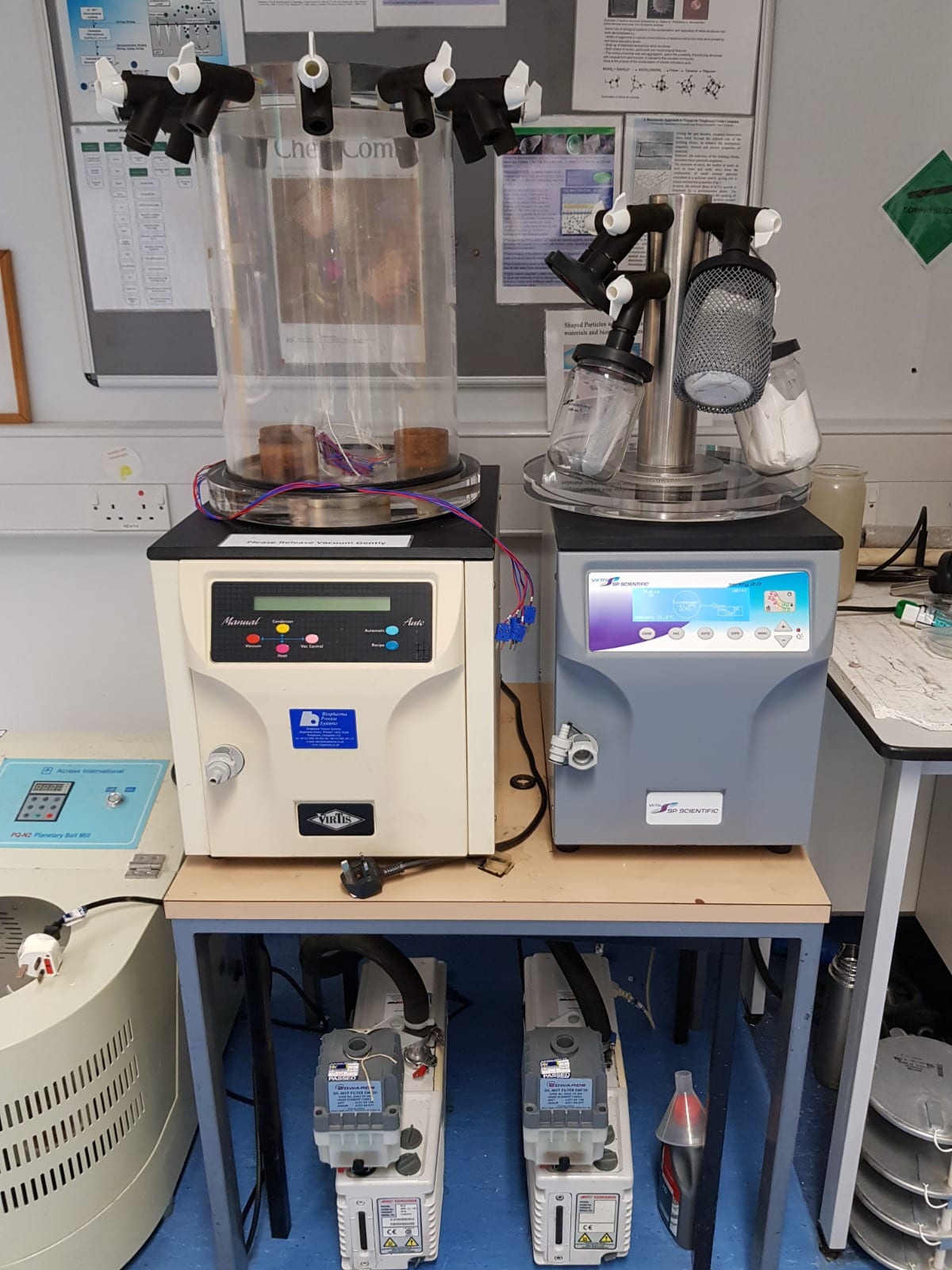The right preservation method can make all the difference when it comes to maintaining the viability of your microbial strains
Given the importance of microorganisms in biology, as protein production factories, assay targets, and as model organisms, the preservation of microorganisms plays a key role in ensuring reproducible results and continuity in research.
Maintaining a library of microbial stocks also enables microorganisms to be easily stored and retrieved, rather than continuously sub-culturing microbial cultures on plates or in tubes, which can lead to the accumulation of detrimental mutations.
Depending on the length of storage and type of microorganism, you’ll need to preserve them in a specific way.
Here are the main ways to preserve microorganisms for your research.
Why Preserve Microbes
The main reason we preserve microorganisms is to keep them dormant, free from contamination and genetic changes, until we are ready to use them for our experiments. This is conventionally accomplished using low temperatures and freeze-drying techniques. These reduce cellular metabolic activity to almost nothing without killing or harming the cells.
The Two Main Ways to Preserve Microorganisms
1. Short-Term Storage: Continous Growth
Microbes can be grown continuously for short periods on a suitable growth medium mixed with agar (which is a setting agent).
Agar plate cultures of microorganisms are viable for a few weeks when kept in the laboratory refrigerator at 4°C.
A similar but slightly longer-term method is the stab culture. Pick a single colony from your agar plate with a needle and stab it into the center of a soft mixture of agar and growth media set into an otherwise sterile Falcon™ or Sterlin™ tube.
Most microorganisms (bacteria, fungi, and algae) can be stored using this method, and it is usually the best way to store microbes that you use regularly. Depending on the species and genus of your microbes, stab cultures can last anywhere from a fortnight to a year.
Using nutrients from the culture media, these cultures grow continuously, albeit slower at lower temperatures, enabling them to survive longer on the available nutrients.
How to Minimize Contamination
To minimize contamination and drying of the agar, the plates should be securely wrapped with laboratory film and stored upside down (agar side up), to prevent condensation from forming on the plate.
Tubes and vials containing agar stab cultures should be capped.
Drawbacks of Short-Term Storage
While the advantage of short-term storage is that your microbes are quick and easy to recover (by streaking them into new plates for new growth), the agar will dry over a prolonged period.
Additionally, the nutrients in the culture media become depleted by the microorganisms, and metabolic waste products also accumulate to toxic levels. Nutrient starvation and toxic waste product build-up eventually cause the death of the stored microorganisms. Even worse, the microbes may acquire unwanted genetic mutations.
The key point here is to think about the time scale of your experiments and to plan ahead before you preserve your microbes.
2. Long-Term Storage: Cryopreservation
For long-term storage, microorganisms are cryopreserved at temperatures below freezing at -20°C or -80°C.
You can either put your cells straight in the freezer or snap-freeze them using liquid nitrogen. Cryopreservation is suitable for many bacteria, algae, fungi, viruses, and protozoa. Ultralow temperatures drastically reduce enzymatic activity and, thus, the metabolic processes of microorganisms.
To prevent damaging and killing the cells via ice crystal formation (remember, ice expands when it freezes), resuspended cells in growth media containing cryoprotectants such as ~30 % v/v glycerol, before freezing.
You can also use skimmed milk instead of glycerol. [1]
To maximize the recovery rate, it is recommended to freeze cultures at the stationary phase of growth when cell concentration is highest.
Cultures stored at -20°C should be stable for at least a year, while cultures stored at -80°C or in liquid nitrogen could be stable for decades!
Frozen microorganisms can be retrieved by gently thawing them at 37°C and inoculating the cells into fresh growth medium. [2]
Alternative Ways to Preserve Microbes
Freeze Drying
Freeze drying (lyophilization) removes moisture from frozen samples through the sublimation of ice in a vacuum, thus arresting microbial metabolic processes and transforming cells into dry pellets for convenient storage and transportation.

Freeze drying has been used to preserve bacteria, algae, yeasts, viruses, and sporulating fungi. [3]
However, note that lyophilization is unsuitable for certain bacteria and non-sporulating fungi as they may not survive the stresses of dehydration.
The suitability of freeze drying will also depend on what you want to do with your microbes after you’ve retrieved them.
Lyophilized cultures can be recovered by rehydrating the cell pellets in growth media (bacteria and algae), growth medium containing the bacterial hosts (bacteriophages), or water (fungi and yeasts) before inoculating into fresh culture media.
Micro-encapsulation
In micro-encapsulation, cells are entrapped in a matrix of some protective encapsulating material before storage. [4] It has been proposed as a long-term microbial preservation method that does not expose the microorganisms to the harsh stresses of freezing and drying.
Encapsulation matrixes include:
- Gelatin.
- Ethylcellulose.
- Polyvinyl alcohol (PVA).
The matrix shields the cells and increases stability during storage.
Regarding its benefits to cell viability, micro-encapsulation of probiotic bacteria in calcium alginate has been shown to improve their viability when stored at -80°C.
Similarly, electrospinning and electrospraying, where microorganisms are trapped in nanofibers and droplets, respectively, have also been used to preserve the viability of sensitive probiotic bacteria. [5]
Microbe Preservation Techniques Summarized
Preserving microbes the right way ensures they are in tip-top shape for your experiments, in turn saving you time, effort, and money.
Short-term continuous growth enables you to retrieve your cells instantly, while long-term cryopreservation can keep your cells viable for years. And for really hardy or really sensitive bugs, there are specialist preservation methods you can try!
Have we missed a good way to preserve microorganisms? Any tips for better sample survival and easier retrieval? Let us know in the comments section below.
Originally published December 2019. Revised and updated May 2023.
References
- Cody WL, Wilson JW, Hendrixson DR, et al. (2008) Skim milk enhances the preservation of thawed -80 degrees bacterial stocks. J Microbiol Methods 75(1):135–38
- Tedeschi R and De Paoli P (2011) Collection and preservation of frozen microorganisms. Methods Mol Biol 675:313–26
- Prakash O, Nimonkar Y, and Shouche YS (2013) Practice and prospects of microbial preservation. FEMS Microbiol Lett 339(1):1–9
- Rathore S, Mahendrakumar PD, Liew CV, et al. (2013) Microencapsulation of microbial cells. J Food Eng 116(2) 369–81
- Alonso S (2016) Novel preservation techniques for microbial cultures. In: Novel food fermentation technologies, 1st edition. Springer Cham: Online







